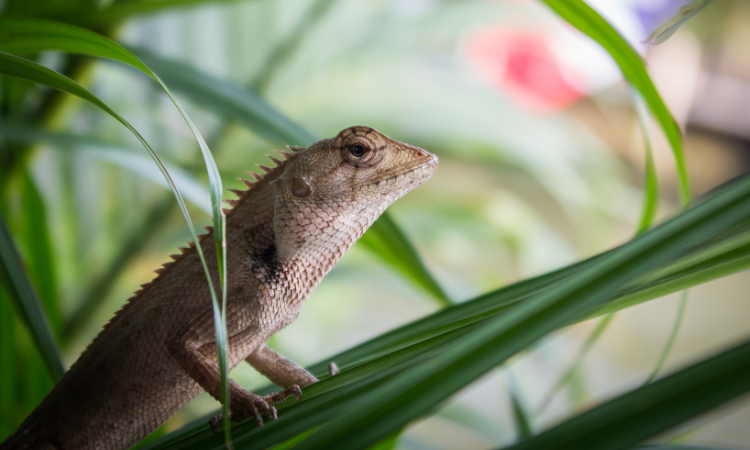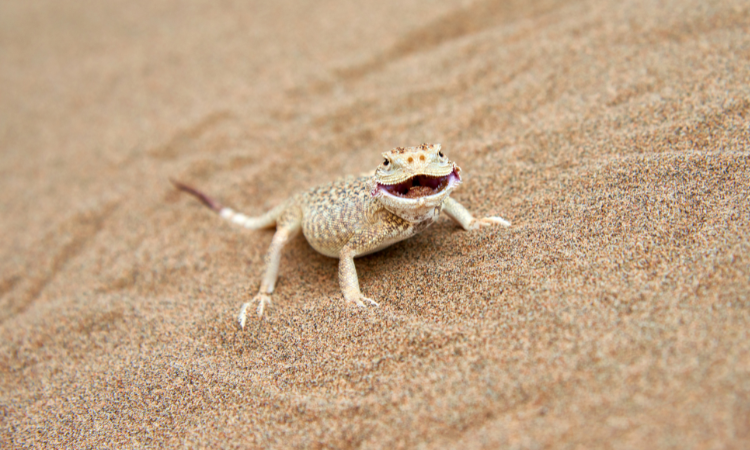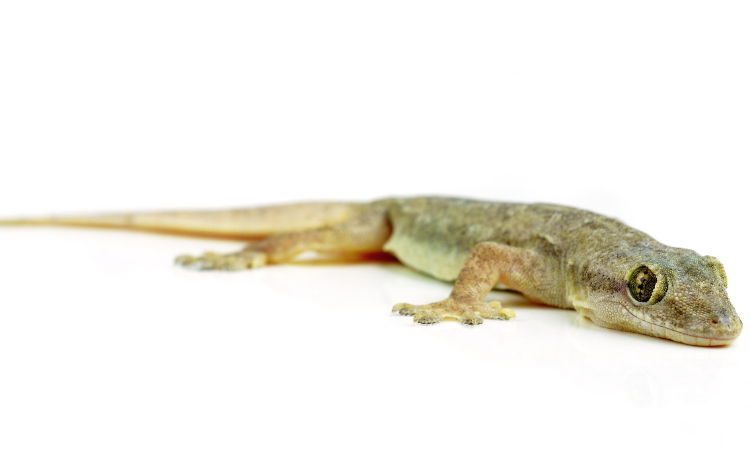Do you own a gecko? Do you ever wonder if they are amphibians? Well, today we are going to explore that topic. Geckos are such amazing creatures and it is time to learn a little more about them! Let’s jump right in and find out if geckos are amphibians.
Geckos are fascinating creatures that are often associated with reptiles and amphibians. However, many people are still unsure whether geckos are amphibians or reptiles. In this blog post, we’ll take a closer look at the classification of geckos and determine whether they are amphibians or not.

Are geckos amphibians or reptiles?
Geckos are actually reptiles, not amphibians. Reptiles are a class of cold-blooded, air-breathing vertebrates that are characterized by their scaly skin, amniotic eggs, and typically four legs. Geckos belong to the order Squamata, which also includes snakes and lizards.
Amphibians, on the other hand, are a separate class of cold-blooded, air-breathing vertebrates that are characterized by their smooth, moist skin and typically lay their eggs in water. Amphibians include frogs, toads, newts, and salamanders.
While geckos and amphibians may share some similarities, such as their ability to climb and their often bright and colorful appearances, they are actually quite different. For example, geckos have dry, scaly skin, whereas amphibians have smooth, moist skin.
Some geckos can walk on water, like amphibians
One reason that people may associate geckos with amphibians is that some species of geckos are able to walk on water, much like some amphibians. However, this ability is actually due to a unique arrangement of hairs on the gecko’s toes, which allows them to grip the water’s surface and create a small pocket of air to support their weight.
Some geckos change colors, like amphibians
Another reason people may mistake geckos for amphibians is that some species of geckos are able to change color, much like some species of frogs and chameleons. However, this ability is actually due to the presence of specialized cells called chromatophores, which allow the gecko to change color in response to its environment.
So, geckos are not amphibians, but rather reptiles that are known for their unique adaptations and abilities. While they may share some similarities with amphibians, such as their climbing abilities and bright colors, they are actually quite distinct from this separate class of cold-blooded vertebrates.
Geckos are not amphibians, but they are reptiles
Geckos are an amazing and unique type of reptile that have adapted to live in various environments across much of the world. They possess many remarkable qualities, such as their ability to cling to surfaces with the adhesive lamellae on their toes, the sound they make when threatened (clicking), and their regenerative tail.
Geckos also differ from amphibians due to their tougher skin that provides them protection against predators and environmental extremes. They can be very energetic, leaping and running with agility, or completely still while they cling to a branch or wall to avoid being spotted.
For these reasons geckos are becoming increasingly popular pet choices among households around the globe.
Geckos are found in warm climates all over the world
Geckos provide a vibrant splash of color to any warm, tropical environment. Found in climates all over the globe, geckos come in many sizes and colors; from olive-green leopard geckos found in desert environments to fluorescently-colored day geckos often spotted snacking on tree fruits and flowers.
Geckos are known for their uncanny ability to stick to walls and ceilings due to their adhesive pads located on the bottom of their feet – an incredible skill that has scientists studying gecko anatomy for many years.
It’s amazing how geckos have found ways to adapt and thrive in hot, tropical climates all around the world!

Geckos come in many different colors and patterns
Geckos are fascinating creatures that come in many different colors and patterns. You can find geckos with bright yellow or orange skin, or geckos with stripes and spots that help them blend into the environment around them.
While geckos can be found all over the world, different gecko species usually have specific colors and patterns that allow them to camouflage well without drawing unwanted attention from predators.
It is a remarkable sight to behold when you spot a gecko in its natural habitat as they stand out amongst the foliage with their unique coloring.
Geckos can climb walls and even walk on ceilings!
Geckos are truly amazing creatures. Not only are geckos incredibly cute and vibrant in color, they can scale vertical surfaces with ease! This incredible ability gives geckos the super power to climb walls and even walk on ceilings.
It’s no surprise that geckos have such a powerful skill; they’ve evolved remarkable adhesive toe pads that enable them to cling to nearly any solid surface, even glass! Research has found that gecko feet employ millions of tiny hairs that generate large van der waals forces to provide geckos with their amazing stickiness.
All things considered, gecko’s are amazing animals with interesting abilities which make them stand out from the rest of the animal kingdom.
Some gecko species can make sounds by clicking their tongues
Geckos are fascinating animals, and it turns out that some gecko species have an additional behavior that set them apart from other reptiles.
Many gecko species have the ability to make chirping, clicking noises by rapidly flicking their tongues to produce vibrations. It’s been theorized that geckos use these vocalizations in a few different ways: as territorial communication or even a mating call in order to find a suitable mate.
While humans struggle to detect the subtle noises geckos make, the geckos themselves are able to raise their voices loud and clear so they can be heard across distances of up to 30 feet or more depending on the species.
In any case, gecko click-talk is yet another unique behavior attributed to these wonderful critters.

Geckos eat insects and other small animals
Geckos are expert predators – small but mighty critters, geckos use their agile bodies and sharp eyesight to hunt down food.
They particularly enjoy dining on insects in all forms, from crunchy beetles and wriggling larvae, to flying moths and grasshoppers. Sometimes geckos will even venture into the world of small vertebrates like spiders, lizards, frogs, and other geckos.
A gecko’s diet is an integral part of its life cycle; a gecko eats up to five times its body weight daily! That’s why geckos come in such a variety of sizes – it allows them to adapt to different prey levels with ease.
Overall, it is abundantly clear that geckos make fascinating animals. From their wide variety of colors and patterns to their incredible ability to climb walls and even walk on ceilings, there is no wonder why so many people find them so captivating.
Not only are they quite a sight to behold, but geckos also have the astounding talent of being able to make sounds by clicking their tongues! Plus, in addition to providing entertainment, geckos play an active role in helping to reduce insect populations.
Therefore, regardless of what angle you look at them from, geckos prove time and time again that they truly have earned their place as one of nature’s most unique creatures!
In conclusion, it is clear that geckos are not amphibians. Rather, they are reptiles that have adapted to the environment in a way that allows them to successfully live both in and out of water. Due to their ability to survive in multiple habitats, geckos have become quite successful and can be found all over the world. They have evolved unique adaptations that make them well-equipped for many different types of environments.
Related posts:

Hi – I’m Erika, the lead gecko enthusiast here at Geckopedia! I write articles about pet geckos, including what to feed your leopard gecko and how to help your pet gecko live a long, happy life! I graduated with advanced degrees from UC-Berkeley, the University of Southern California (USC) and Indiana University-Bloomington, where I studied Biology and Animal Science. I use my experience to help others learn about gecko care, and I am an advocate for all topics gecko related!
